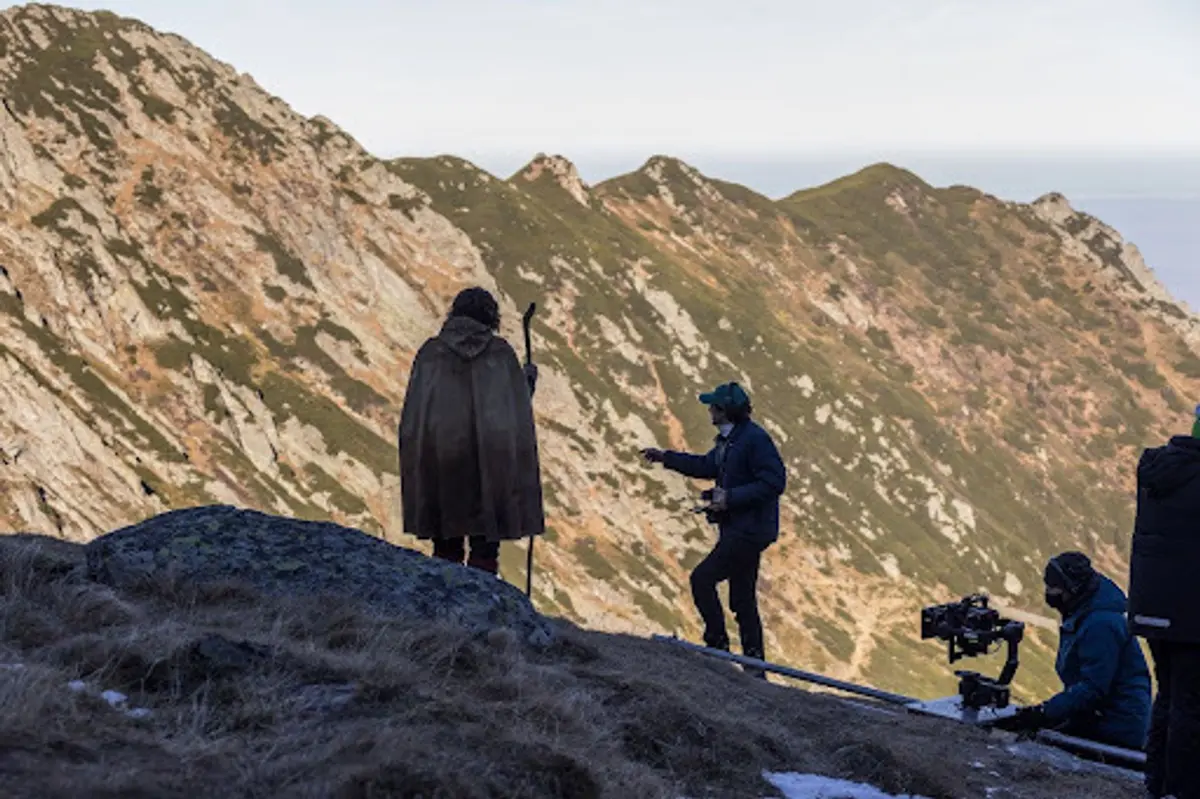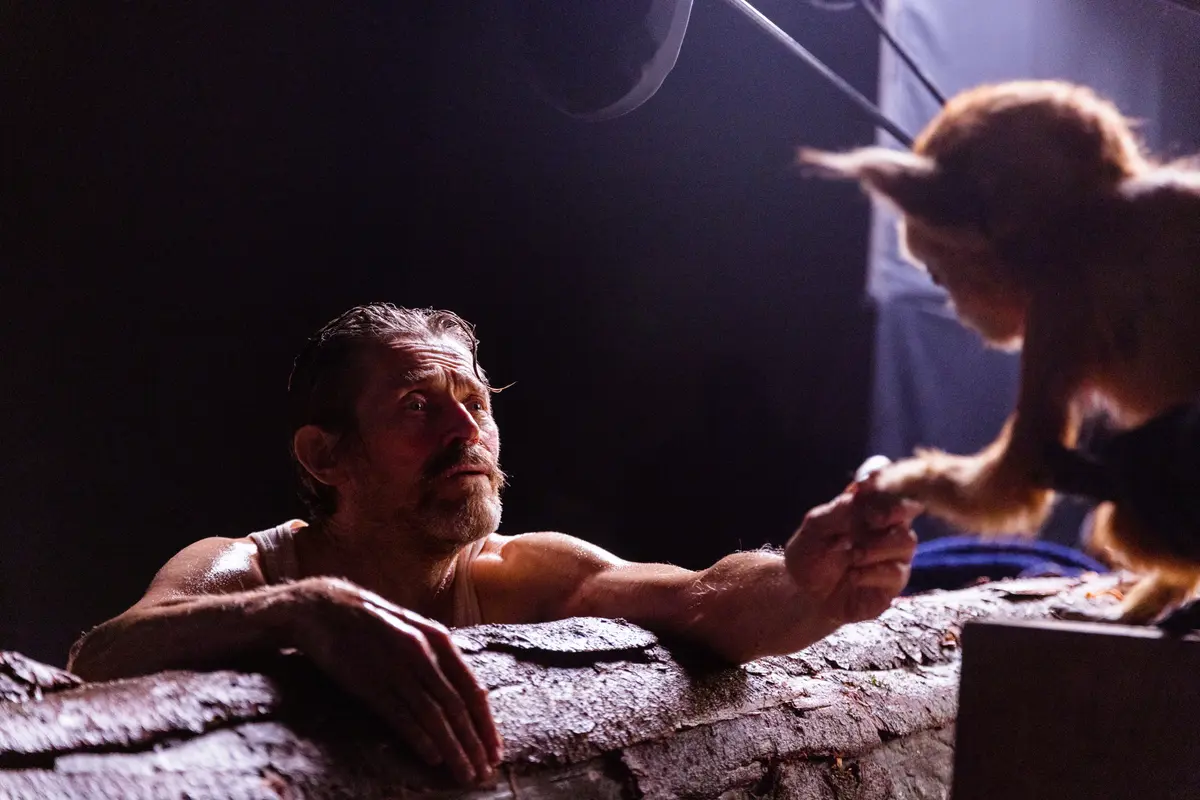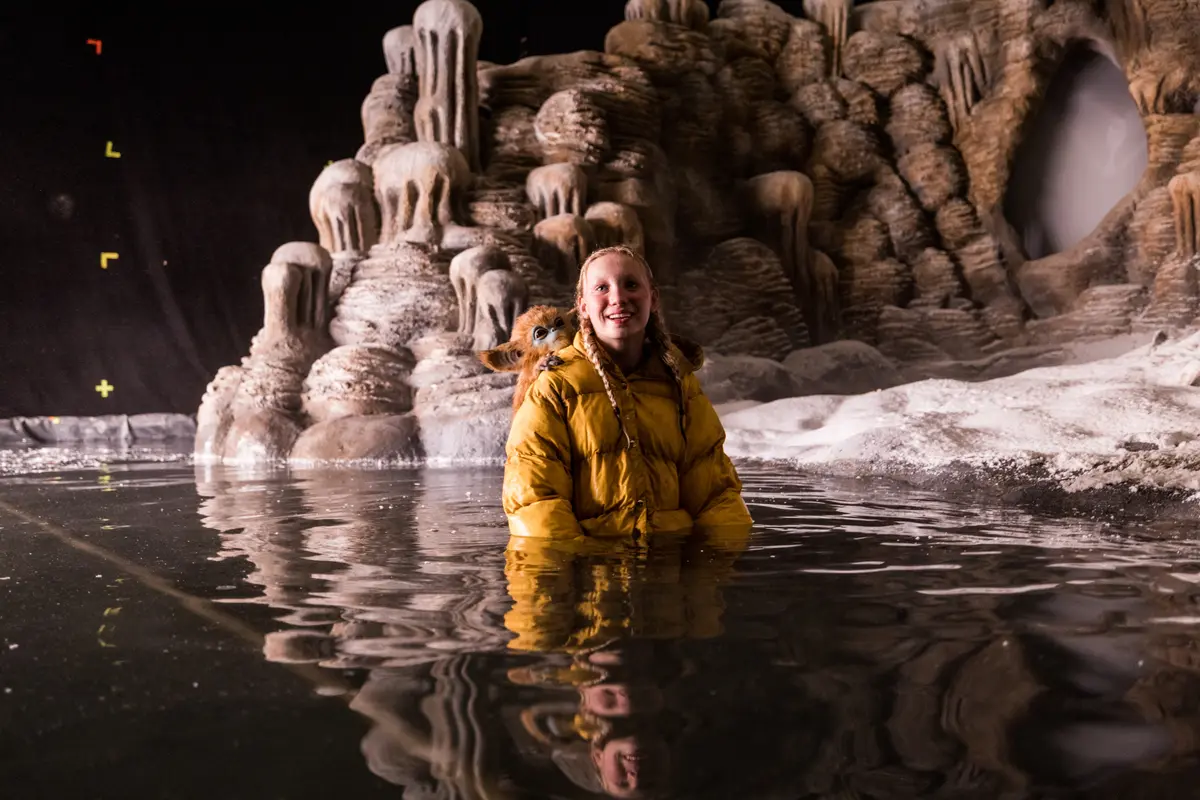Dear Movie Lover,
I’m writing to you on this occasion to invite you out of your home and into a movie theatre to see a film starring Willem Dafoe, Emily Watson, Finn Wolfhard, Helena Zengel, a gang of Romanian boys, a realistic animatronic puppet, and several people in ape suits. This film, The Legend of Ochi, is my first, and it took seven years to create. We filmed on location in the remote mountain villages of Transylvania. I made over two hundred matte paintings. The sets we constructed atop the highest elevation road-accessible point in Romania were eaten by large bears. This film was an adventure to make, and if you go to the theatre this weekend, I trust you’ll feel that for yourself.

As a kid, all I wanted to do was draw. That’s what I was good at. Teachers were concerned that I was ignoring everything else, but Mom said, “Just let him draw. The rest will come later.” Drawing turned into sculpting, which turned into building characters and sets, learning how to film them, then learning how to paint over the pictures afterwards, to make them look more like what I imagined. In my twenties, as I began making music videos for Björk, Grizzly Bear, and others, I simply kept following my nose for what was fun to do with my hands – drawing, sculpting, building, and shooting in the mountains with my friends. From this naive pursuit of fun, slowly came an approach to filmmaking grounded in the sublime power of pictures and music to tell stories – my own personal version of the lost art of non-verbal cinema. The Legend of Ochi has plenty of words in it, even some long monologues performed by some of the greatest actors to ever live, but in every way, I have tried to double down on this approach to art that began when I was five-years-old.

I began writing this film with a simple curiosity. Could a kid that’s been shut down by the world find another way of being through a relationship with an animal? I grew up talking to animals, communicating in whistles with an Amazonian parrot named Peanut. I knew there was a deep experience of the world behind his eyes, and when I engaged with him on his level, I felt my own mind becoming more alert and alive and gentle all at once. Aware of it or not, I think every artist finds their ideas by fishing in the dark for a kind of medicine that might heal them. On this particular film, my medicine was the power of human-animal communication. For all its miraculous power, I’ve always felt a deep sense of discomfort with how human language forces us to rationalize our intuition, shrinking the big sea of feelings that we’re really made of into a short linear string of symbols. Before we evolved this capacity, we relied on more primal means like gesture, dance, music, and pictures. These are now called “art”, but for millenia they were simply how we communicated – intuitive, emotional, open – like all other animals. Anyone who has an animal in their life, knows that whatever is wrong with us, they seem to offer another way, a kind of antidote that points toward being present, simple, and direct.

The world of our film is an invented island called Carpathia. With it, I hoped to create a place that feels completely real, so that kids, and even adults, might wonder, did I miss the geography lesson on the small island in the Black Sea? Did I miss the BBC nature special on the endangered primate that lives there? This island is a direct, reverent collage of the ecology and culture of the Carpathian Mountains which arc through Eastern Europe, where my Ukrainian ancestors come from. This is a place of deep mystery. Even today, as soon as you leave the cities, you’ll find yourself surrounded by country people driving horse-drawn carriages, scything their fields by hand, and building haystacks for the long winter. It’s a place where wolves, boar, lynx, and bears thrive in the most intact primeval forest in Europe. As wild as it was, this was where we brought our legion of legendary puppeteers, suit performers, animatronic designers, and brilliant Romanian craftspeople to create our fantasy-adventure. To my surprise, the Transylvanian people embraced our production and brought us into their homes, offering us the wild-foraged bounty of their forests. The mystery and adventure we pursued in these Carpathian mountains reminded me of where I grew up, in the redwoods of California, where old hippies told me that if I wandered far enough away from home, I might encounter an undiscovered primate, The North American Great Ape. This feeling that magic lay hidden in the forest stuck with me, and I hope I’ve bottled it here, for you, through a journey to Carpathia.

While Ochi may have been born from childhood experience, it doesn’t come from a nostalgia for the movies of my youth, even if it might look the part. I saw E.T. for the first time when I was 25-years-old. The same year I saw Paris, Texas. To me, these films were on equal footing as examples of high art – masterful explorations of the subjectivity of kids living through divorce – the kind of art I aspired to make. I also didn’t write toward an imaginary kid audience. I made Ochi for the kid that’s still alive in me, because to do it any other way would be a disaster. However, this movie is for them. While I trust that many adults will love this film – I hope it makes you cry and laugh and wonder like a kid again – I think we have to admit, as adults, that we’re a bit cooked. We’ve already built our model of how the world works, full of flaws we can’t see, our concrete slowly setting. Kids are still figuring it out. They’re open and curious. Very often, they’re seeing reality more clearly. My hope is that The Legend of Ochi makes perfect sense to them, even if it frustrates some adults. It’s an expression of my optimism, which like pessimism, is of course incomplete and wrong. But I feel nobody can rightly claim to be a realist – nobody can truly know the world – so if you’re going to be wrong, be wrong in the direction of kindness and beauty. George Saunders once said, “What moves me most in fiction are depictions of goodness that are not fraudulent or sentimental." Dear reader, at the very least, I have aspired to this.

